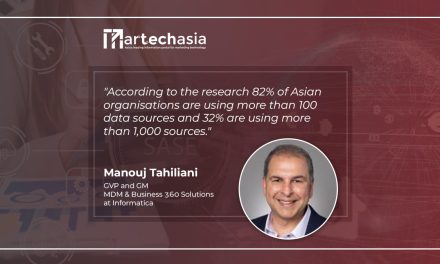In an evolving landscape, consumers are placing greater importance on recommendations and reviews when considering purchases.
In this Q&A, Antoine Gross, impact.com’s general manager for SEA and India, shares insights on the trends and the ins and outs of affiliate marketing.
1. What are the key trends driving the growth of fashion and beauty e-commerce in Southeast Asia?
Antoine: Southeast Asia’s fashion and beauty e-commerce thrives on social media. A whopping 91% of consumers shop online, with 78% embracing social commerce. Platforms like Instagram, Facebook, and TikTok are not just social hubs but crucial discovery and purchase channels. Integrated shopping features enable seamless in-feed purchases, blurring the lines between shopping and social interaction.

This necessitates a strong social media presence for brands. Livestream shopping is another game-changer. Major markets see a third of sellers offering livestream experiences. Platforms like TikTok Shop showcase explosive growth, with GMV quadrupling to $4.4 billion in 2022 and projected to reach $12 billion in 2023.
These interactive experiences often feature celebrities alongside influencers, boosting engagement and trust compared to traditional e-commerce. The success fuels a shift towards influencer-driven live selling, expected to attract more celebrities and brands in 2024.
Personalization is another key differentiator. Consumers seek tailored experiences, and e-commerce platforms are leveraging data and AI to offer personalized product recommendations, targeted marketing, and customized shopping journeys. This focus caters to individual preferences, boosting customer satisfaction and loyalty. In a competitive landscape, delivering personalized experiences is paramount for brands seeking market share.
In today’s digital landscape, consumers are also increasingly relying on recommendations from trusted individuals and sources rather than directly purchasing from brands. This shift in purchasing behavior underscores the importance of influencer and affiliate marketing as brands strive to reach and engage their target audiences effectively.
Affiliate marketing guides purchase-ready customers toward your offer—while influencers introduce your brand to a wider following. Together, they work hand-in-hand to amplify reach, boost credibility, and accelerate conversions. This holistic approach maximizes brand reach and impact through a full-funnel marketing strategy.
2. How can affiliate marketing help brands reach new audiences and boost sales?
Antoine: In today’s saturated digital environment, consumers face a barrage of choices across platforms like Netflix, YouTube, TikTok, Spotify, and Instagram, so brands trying to reach them via traditional online advertising alone is no longer cost efficient nor sufficient. WordStream’s “2023 State of Display Advertising Report” also highlights a stark reality: display ad click-through rates plummeting below 0.5%, signaling a shift towards authenticity and personal recommendations over generic corporate messaging.
Affiliate marketing is a powerful channel that relies on authenticity and recommendations for brands looking to reach new audiences and boost sales.
By collaborating with established partners like influencers, content sites, coupon and cashback sites and more, brands can expand their awareness among consumers who may not yet be aware of their products or services. Essentially, brands find partners with aligned values and target audience to help promote their products or services and then get rewarded for every sale or conversion driven.
This approach enables brands to tap into a large network of relevant websites and content creators already engaging with specific target audiences which helps brands reach new audiences.
The targeted nature of affiliate promotions significantly increases the likelihood of conversions and sales. Since affiliates typically cater to specific niches or audiences, their promotions resonate with people already interested in similar products or services. This pre-qualification of the audience means that recommendations from affiliates are more likely to result in actual purchases, making the marketing effort more efficient and effective.
3. Can you share some insight on best practices for fashion and beauty brands looking to leverage affiliate marketing in Southeast Asia?
Antoine: Fashion and beauty brands in Southeast Asia can unlock the power of affiliate marketing by finding the right partners that align with their brand value and target audiences. Depending on the marketing objective and at which point of the funnel, partners can include influencers and content creators to content publishers for top funnel awareness and ultimately cashback and coupon sites to drive bottom funnel sales.
Remember, Southeast Asia is a diverse region. To truly connect with consumers, consider a localized approach. Partner with affiliates who have a deep understanding of their specific market, including language, cultural nuances, and consumer behavior. This ensures the brand’s campaigns resonate with different segments across the region.
Keeping affiliates motivated is crucial. Offer competitive commissions, bonuses, or even exclusive discounts. Nano and micro-influencers might appreciate PR kits to create compelling content. By making it worthwhile for them to promote the brand, it will attract top performers and encourage long-term partnerships.
If you plan to tap on influencers, rely and trust their strengths in understanding what their followers like and want, and give them the control and creativity to create content for you, that would resonate with their followers. This strategy not only helps create a more authentic engagement but could also drive eventual potential customers for the brand.
Finally, don’t forget to measure a brand’s success by utilizing affiliate marketing software to track clicks, conversions, and sales. These insights will reveal which affiliates and strategies are most effective, allowing brands to continuously refine their approach and maximize their return on investment.


















